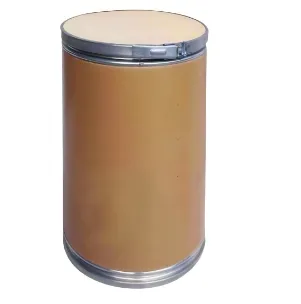
jul . 21, 2025 15:54 Terug naar lijst
Mesotrione Residue Management in Crops
In modern agriculture, managing pesticide residues is crucial for ensuring crop quality, food safety, and environmental protection. Mesotrione, along with products like mesotrione herbicide and atrazine mesotrione, is widely used for weed control in various crops. However, proper management of mesotrione residues is essential to avoid potential negative impacts. HEBEI CHENGNONG BIOTECH CO., LTD offers high - quality mesotrione - based products and comprehensive guidance on residue management. For wholesalers, understanding these management practices can help you provide valuable support to your customers and drive business growth.

Understanding Mesotrione Residue Characteristics
Mesotrione residues in crops are influenced by multiple factors, including soil type, climate, and application methods. In well - drained soils with higher microbial activity, mesotrione tends to degrade more rapidly. For example, in cornfields, where mesotrione is commonly applied for pre - and post - emergent weed control, understanding the local soil conditions helps predict residue levels. In regions with warmer temperatures and adequate moisture, the degradation process is accelerated. HEBEI CHENGNONG BIOTECH CO., LTD provides detailed information on how mesotrione behaves in different environments, enabling farmers to plan their crop rotations and management strategies to minimize residues. This knowledge is crucial for ensuring that subsequent crops, such as soybeans or wheat planted after corn, are not affected by residual mesotrione.
Controlling Residues from Mesotrione Herbicide Application
When using mesotrione herbicide, several measures can be taken to control residues. First, strictly follow the recommended dosage and application timing provided by HEBEI CHENGNONG BIOTECH CO., LTD. Over - application can lead to higher residue levels. In potato fields, for instance, applying the correct amount of mesotrione herbicide at the right growth stage of the crop effectively controls weeds while minimizing residues. Additionally, proper irrigation after application can help move mesotrione into the soil, reducing its presence on the crop surface. In onion and pepper fields, this practice can be beneficial for residue management. Regular soil testing can also monitor residue levels over time, allowing farmers to make informed decisions about future crop planting and herbicide use.
Managing Residues of Atrazine Mesotrione Mixtures
Atrazine mesotrione mixtures are often used for enhanced weed control in various crops like sugarcane and rice. However, managing the residues of these mixtures requires special attention. The combined residues of atrazine and mesotrione need to be considered when planning crop rotations. In apple and citrus orchards, if atrazine mesotrione is used for weed control, understanding the residual patterns helps prevent potential damage to the fruit trees in subsequent seasons. HEBEI CHENGNONG BIOTECH CO., LTD offers guidance on the safe use and residue management of atrazine mesotrione mixtures, including information on appropriate waiting periods before planting sensitive crops. This ensures that the benefits of using the mixture for weed control do not come at the cost of crop health due to excessive residues.
Mesotrione Residue FAQS
How long does mesotrione residue persist in the soil?
The persistence of mesotrione residue in the soil depends on multiple factors. Generally, in optimal conditions with good soil aeration and active microbial populations, mesotrione can degrade within 2 - 4 months. However, in colder, wetter, or less - aerated soils, residues may persist for up to 6 months or more. HEBEI CHENGNONG BIOTECH CO., LTD can provide more specific information based on local soil and climate conditions to help farmers plan their crop rotations accordingly.
Can mesotrione herbicide residues affect the quality of harvested crops?
If mesotrione herbicide residues exceed the permitted levels, they can potentially affect the quality of harvested crops. For example, in edible crops like potatoes and onions, high residue levels may impact taste, texture, and safety. Following the recommended application rates and waiting periods before harvest, as specified by HEBEI CHENGNONG BIOTECH CO., LTD, helps ensure that crop quality remains unaffected.
What are the best practices for reducing atrazine mesotrione residues?
To reduce atrazine mesotrione residues, farmers should follow strict application guidelines, including using the correct dosage and application method. Crop rotation with non - sensitive crops is also effective. For example, after using atrazine mesotrione in cornfields, planting a crop like alfalfa, which is less sensitive to the residues, can help break the residue cycle. Additionally, proper soil management practices, such as tillage and adding organic matter, can enhance the degradation of residues.
How does irrigation impact mesotrione residue levels?
Irrigation can have a significant impact on mesotrione residue levels. Adequate irrigation after mesotrione application can help move the herbicide deeper into the soil, reducing its concentration on the soil surface and crop roots. This can lower the risk of residues affecting subsequent crops. However, over - irrigation can also cause the herbicide to leach into groundwater, so it's important to follow HEBEI CHENGNONG BIOTECH CO., LTD's recommended irrigation practices.
Are there any crops that are particularly sensitive to mesotrione residues?
Yes, some crops are highly sensitive to mesotrione residues. Crops like spinach, lettuce, and certain varieties of beans can be severely damaged if planted too soon after mesotrione application. HEBEI CHENGNONG BIOTECH CO., LTD provides a list of sensitive crops and recommended waiting periods to help farmers avoid potential crop losses due to residual mesotrione.
Are you a wholesaler looking for high - quality mesotrione - based products and expert residue management advice? HEBEI CHENGNONG BIOTECH CO., LTD offers top - notch mesotrione, mesotrione herbicide, and atrazine mesotrione products, along with comprehensive support on residue management. Our products and guidance are designed to meet the diverse needs of modern agriculture. Contact us today to discuss your wholesale requirements, request samples, and start a profitable partnership!
-
Tembotrione Mode of Action in Weed Control
NieuwsJul.21,2025
-
Safety Guidelines for Handling Atrazine in Farming
NieuwsJul.21,2025
-
Mesotrione Residue Management in Crops
NieuwsJul.21,2025
-
How Topramezone Controls Resistant Weed Species
NieuwsJul.21,2025
-
How to Properly Handle Glufosinate Ammonium
NieuwsJul.21,2025
-
Best Practices for Applying 2 4d Herbicide
NieuwsJul.21,2025
